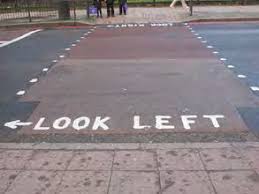People from poorer communities are more likely to be killed or injured on Britain’s roads, with those from ethnic minority groups (excluding white minorities) more at risk.
The ‘Road traffic and injury risk in ethnic minority populations’ report, produced by Agilysis and walking charity Living Streets, examined four groups of pedestrian casualties: ethnic minority (excluding white minorities) pedestrians living in deprived areas; white pedestrians living in deprived areas; ethnic minority (excluding white minorities) pedestrians living in non-deprived areas; and white pedestrians living in non-deprived areas.
The report finds that deprived ethnic minority (excluding white minority) pedestrians are more than three times more likely to be a casualty on Britain’s roads than white non-deprived pedestrians. Deprivation more than doubles the risk of becoming a pedestrian casualty. People from an ethnic minority (excluding non-white minorities) are 25 per cent more likely to be a casualty than white pedestrians.
This increased risk may be due, in part, to the amount of time spent as a pedestrian as people from ethnic minority groups and poorer communities are more likely to walk and less likely to have a car.
Mary Creagh, Chief Executive, Living Streets said:
“Britain’s poorest people and people from ethnic minority groups already bear the brunt of traffic congestion and air pollution. This important new report reveals that they are also more likely to be a casualty on Britain’s dangerous roads.
“Black lives matter and we would like to see more research into the causes of these worrying inequalities so that we can reduce road danger for everyone.”
Active Travel Academy research found that low-traffic neighbourhoods established during the coronavirus lockdown are benefitting poorer and ethnic minority communities in London, after local authorities and Transport for London used equity criteria in their planning processes. Living Streets wants this approach be adopted nationwide, so that low-traffic neighbourhoods are targeted at areas with the greatest risk of road collisions.
Mary Creagh continues:
“National policy makers and politicians must ensure that this levelling up approach is baked into the roll-out of low traffic measures so that people from all communities can benefit from safer streets.”
Dan Campsall, Chairman, Agilysis said:
“Those of us working in road safety research are well aware of the links between deprivation and the risk of being injured as a pedestrian. What is less well-known is that ethnic background also influences the likelihood of being a road casualty.
“This initial analysis highlights that a problem exists but more work needs to be done to understand why it is a problem and what could be done to address these inequalities.”







